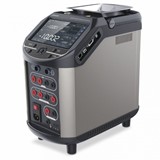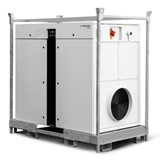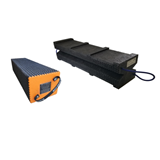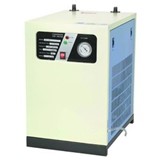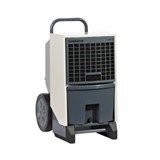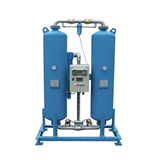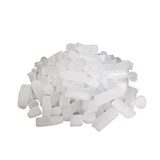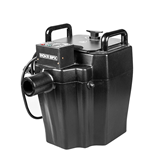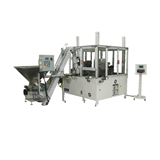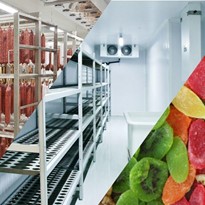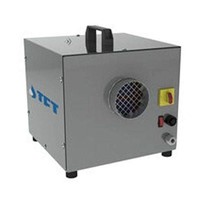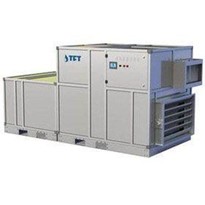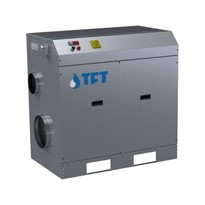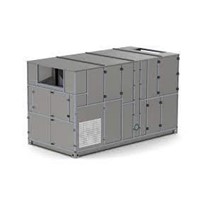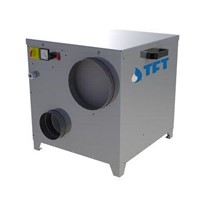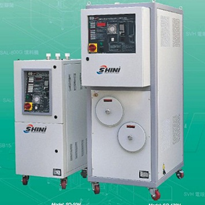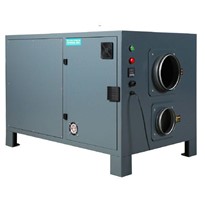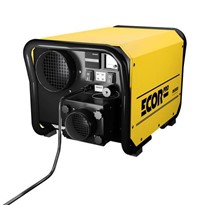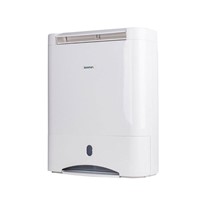Methodology
Participants
For this study, two identical cuts of prime rib approximately 4.5 kg (10 pounds) each, were selected from a reputable supplier. The meat was divided into two groups: Group A (Desiccant Dehumidifier) and Group B (Salt Block).
Dry Aging Environment
Group A: Desiccant Dehumidifier
A dedicated dry aging chamber was set up with a commercial-grade desiccant dehumidifier designed by Humiscope. The chamber was maintained at a consistent temperature of 1°C (34°F) and relative humidity (RH) of 85%. The dehumidifier continuously removed moisture from the air, creating a controlled dry aging environment.
Group B: Salt Block
The second cut of meat was placed on a rack directly above a slab of food-grade salt block within a refrigerated environment at the same temperature as Group A. The salt block was expected to help regulate humidity levels by absorbing excess moisture.
Duration
Both Cuts were dry aged for a period of 28 days.
Observations and Results
Humiscope Desiccant Dehumidifier (Group A):
- The meat displayed a consistent and uniform drying process throughout the 28-day period.
- External moisture on the meat's surface was effectively reduced, forming a desirable dry-aged crust.
- Minimal weight loss was observed, approximately 12% of the original weight.
- The meat exhibited a concentrated and intensified flavour profile, with a tender and buttery texture.
Salt Block (Group B):
- The salt block absorbed some moisture from the environment, causing the meat's surface to be relatively drier.
- Uneven moisture distribution was noted, resulting in uneven crust development.
- Weight loss was higher compared to Group A, approximately 18% of the original weight.
- The meat's flavour profile was milder compared to Group A, with less pronounced dry-aged characteristics.
Results
Quality and Flavour
The desiccant dehumidifier method (Group A) yielded superior results in terms of flavour concentration and tenderness. The controlled environment facilitated consistent moisture removal and even drying, resulting in a more desirable dry-aged crust and intensified flavours.
Efficiency
The desiccant dehumidifier showcased greater efficiency in maintaining a consistent dry aging environment. The salt block method (Group B) demonstrated challenges in regulating humidity, leading to uneven moisture distribution and surface dryness.
Weight Loss
While both methods led to weight loss due to moisture evaporation, the salt block method (Group B) experienced higher weight loss, potentially impacting yield, and overall cost-effectiveness.
Conclusion
In this study, the desiccant dehumidifier approach proved to be more effective and efficient in dry aging meats compared to the salt block method. The controlled environment of the dehumidifier facilitated consistent moisture removal, resulting in a desirable dry-aged crust and intensified flavour profile. While the salt block method has potential benefits, such as a lower upfront cost, it struggled to maintain uniform humidity levels and yielded less consistent results. Chefs and butcheries seeking to achieve optimal dry-aged meats are advised to consider utilising desiccant dehumidifiers for improved outcomes.



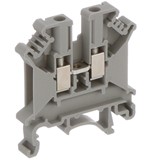
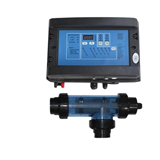
-160x160-state_article-rel-cat.png)
